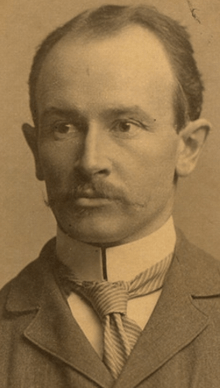Dorchester (Province of Canada electoral district)
Dorchester was an electoral district of the Legislative Assembly of the Parliament of the Province of Canada, in Canada East. It was created in 1841, by the merger of two previous electoral districts of the Legislative Assembly of Lower Canada, Dorchester and Beauce. It was represented by one member in the Legislative Assembly.
| Defunct pre-Confederation electoral district | |
|---|---|
| Legislature | Legislative Assembly of the Province of Canada |
| District created | 1841 |
| District abolished | 1867 |
| First contested | 1841 |
| Last contested | 1863 |
The electoral district was abolished in 1867, upon the creation of Canada and the province of Quebec.
Boundaries
The Union Act, 1840 merged the two provinces of Upper Canada and Lower Canada into the Province of Canada, with a single Parliament. The separate parliaments of Lower Canada and Upper Canada were abolished.[1]
The Union Act provided that while many of the pre-existing electoral boundaries of Lower Canada and Upper Canada would continue to be used in the new Parliament, some electoral districts would be defined directly by the Union Act itself.[2] Dorchester was one of those new electoral districts. The Union Act merged the previous electoral districts of the County of Dorchester and the County of Beauce, to create a new district, also called Dorchester.[3]
Under the previous legislation, enacted in 1829, the former district of Dorchester had been based on the seigniory of Lauzon, on the south shore of the Saint Lawrence, near Lévis.[4]
The former district of Beauce had been immediately to the south east of the former district of Dorchester, and was defined as follows:
The effect of the Union Act provision was to merge those two sets of boundaries into one district. The Dorchester electoral district was thus south of Quebec City, between the Saint Lawrence and the border with the United States, in the current Chaudière-Appalaches administrative region.
Members of the Legislative Assembly
Dorchester was represented by one member in the Legislative Assembly.[3]
The following were the members of the Legislative Assembly from Dorchester.[5]
| Parliament | Years | Member | Party[6] | |
|---|---|---|---|---|
| 1st Parliament 1841–1844 |
1841–1844 | Antoine-Charles Taschereau |  |
Anti-unionist and Group Canadien-français |
Abolition
The district was abolished on July 1, 1867, when the British North America Act, 1867 came into force, splitting the Province of Canada into Quebec and Ontario.[7] It was succeeded by electoral districts of the same name in the House of Commons of Canada[8] and the Legislative Assembly of Quebec.[9]
References
- Union Act, 1840, 3 & 4 Vict., c. 35, s. 2.
- Union Act, 1840, ss. 16, 18.
- Union Act, 1840, s. 19.
- An Act to make a new and more convenient subdivision of the Province into Counties, for the purpose of effecting a more equal Representation thereof in the Assembly than heretofore, SLC 1829, c. 73, s. 1, paras. 7, 8.
- J.O. Côté, Political Appointments and Elections in the Province of Canada, 1841 to 1860, (Quebec: St. Michel and Darveau, 1860), pp. 43-58.
- For party affiliations, see biographies of individual members: Québec Dictionary of Parliamentary Biography, from 1764 to the present.
- British North America Act, 1867 [now the Constitution Act, 1867, s. 6.
- Constitution Act, 1867, s. 40, para. 2
- Constitution Act, 1867, s. 80.
![]()